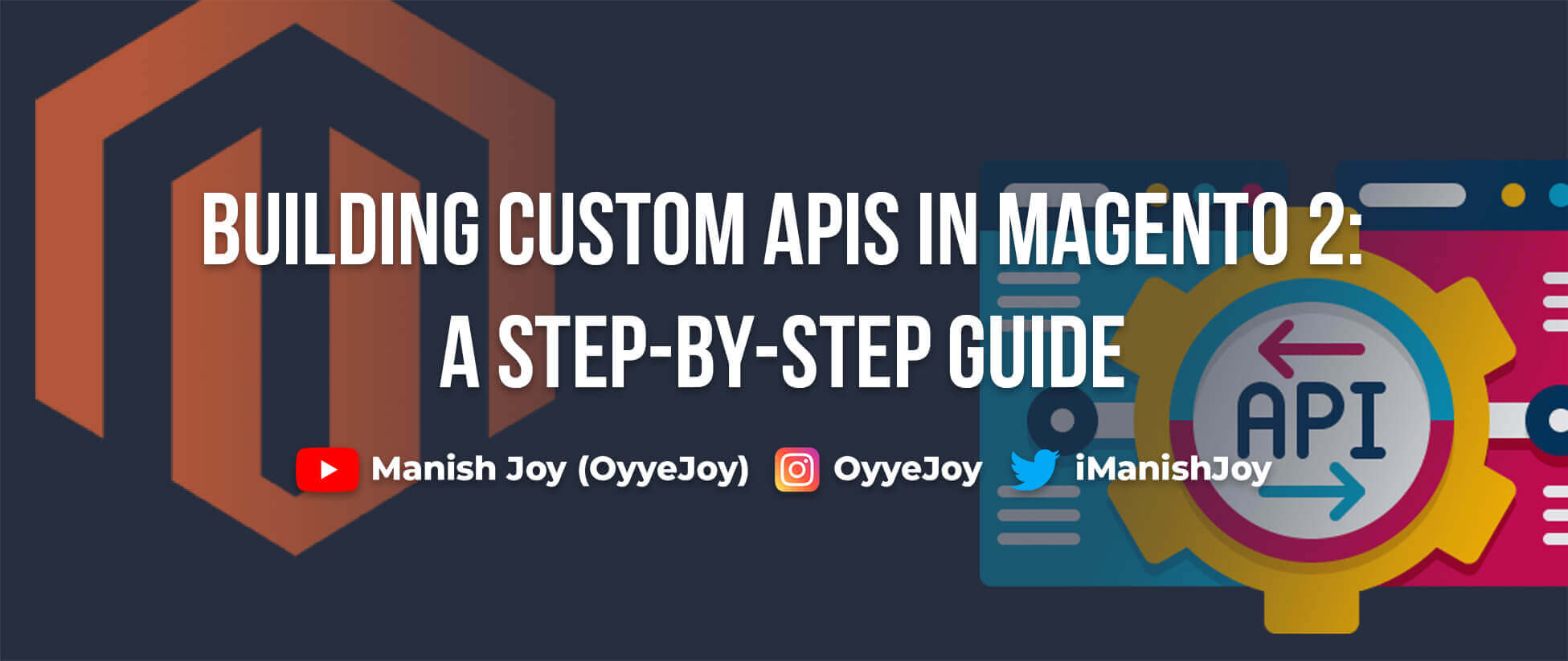Building Custom APIs in Magento 2: A Step-by-Step Guide
Magento 2’s robust API framework allows developers to create custom APIs, enabling seamless integration with external systems and enhancing the functionality of Magento stores. This guide will walk you through the process of building custom APIs in Magento 2, covering essential components, configuration, and practical examples.
Why Custom APIs?
Custom APIs in Magento 2 allow you to:
- Extend Functionality: Add new features to your Magento store.
- Integrate Systems: Connect with third-party services and applications.
- Improve Automation: Automate processes and data exchanges.
Prerequisites
Before you begin, ensure you have:
- A Magento 2 installation.
- Basic knowledge of PHP and Magento 2 module development.
Step 1: Create a New Module
First, create a new module for your custom API.
- Define Module Structure:
app/code/Vendor/Module/ ├── registration.php ├── etc/module.xml - registration.php:
<?php \Magento\Framework\Component\ComponentRegistrar::register( \Magento\Framework\Component\ComponentRegistrar::MODULE, 'Vendor_Module', __DIR__ ); - module.xml:
<?xml version="1.0"?> <config xmlns:xsi="http://www.w3.org/2001/XMLSchema-instance" xsi:noNamespaceSchemaLocation="urn:magento:framework:Module/etc/module.xsd"> <module name="Vendor_Module" setup_version="1.0.0"/> </config>
Step 2: Define API Endpoint
Define the API endpoint in webapi.xml.
Understanding webapi.xml Elements
<route>: Defines the URL pattern and HTTP method for the API.url: The URL path for accessing the API.method: The HTTP method (GET, POST, PUT, DELETE) to be used.
<service>: Maps the route to a specific PHP class and method.class: The fully qualified name of the class handling the request.method: The method within the class to be called.
<resources>: Specifies the access control for the API.<resource ref>: Defines which user roles can access the API.
- webapi.xml:
<?xml version="1.0"?> <routes xmlns:xsi="http://www.w3.org/2001/XMLSchema-instance" xsi:noNamespaceSchemaLocation="urn:magento:module:Magento_Webapi/etc/webapi.xsd"> <route url="/V1/customapi/:id" method="GET"> <service class="Vendor\Module\Api\CustomApiInterface" method="getById"/> <resources> <resource ref="anonymous"/> </resources> </route> </routes>
Step 3: Create API Interface and Implementation
Create the interface and model for your custom API.
- Api/CustomApiInterface.php:
<?php namespace Vendor\Module\Api; interface CustomApiInterface { /** * Get entity by ID. * * @param int $id * @return \Vendor\Module\Api\Data\CustomEntityInterface */ public function getById($id); } - Model/CustomApi.php:
<?php namespace Vendor\Module\Model; use Vendor\Module\Api\CustomApiInterface; use Vendor\Module\Api\Data\CustomEntityInterface; class CustomApi implements CustomApiInterface { protected $customEntityFactory; public function __construct(\Vendor\Module\Model\CustomEntityFactory $customEntityFactory) { $this->customEntityFactory = $customEntityFactory; } public function getById($id) { $entity = $this->customEntityFactory->create()->load($id); if (!$entity->getId()) { throw new \Magento\Framework\Exception\NoSuchEntityException(__('Entity with id "%1" does not exist.', $id)); } return $entity; } }
Step 4: Define Data Interface
Create a data interface and model to structure the data returned by your API.
- Api/Data/CustomEntityInterface.php:
<?php namespace Vendor\Module\Api\Data; interface CustomEntityInterface { /** * Get ID * * @return int */ public function getId(); /** * Get Name * * @return string */ public function getName(); } - Model/CustomEntity.php:
<?php namespace Vendor\Module\Model; use Magento\Framework\Model\AbstractModel; use Vendor\Module\Api\Data\CustomEntityInterface; class CustomEntity extends AbstractModel implements CustomEntityInterface { protected function _construct() { $this->_init('Vendor\Module\Model\ResourceModel\CustomEntity'); } public function getId() { return $this->getData('entity_id'); } public function getName() { return $this->getData('name'); } }
Step 5: Testing Your Custom API
With your custom API implemented, you can now test it using tools like Postman or cURL.
Example cURL Command:
curl -X GET "http://your-magento-site.com/rest/V1/customapi/1" -H "accept: application/json"
Conclusion
By following these steps, you can create custom APIs in Magento 2, enabling powerful integrations and extending the functionality of your Magento store. Whether you’re building new features or integrating third-party services, custom APIs offer a flexible and efficient way to enhance your Magento 2 capabilities.
Liked the post, share with others:




